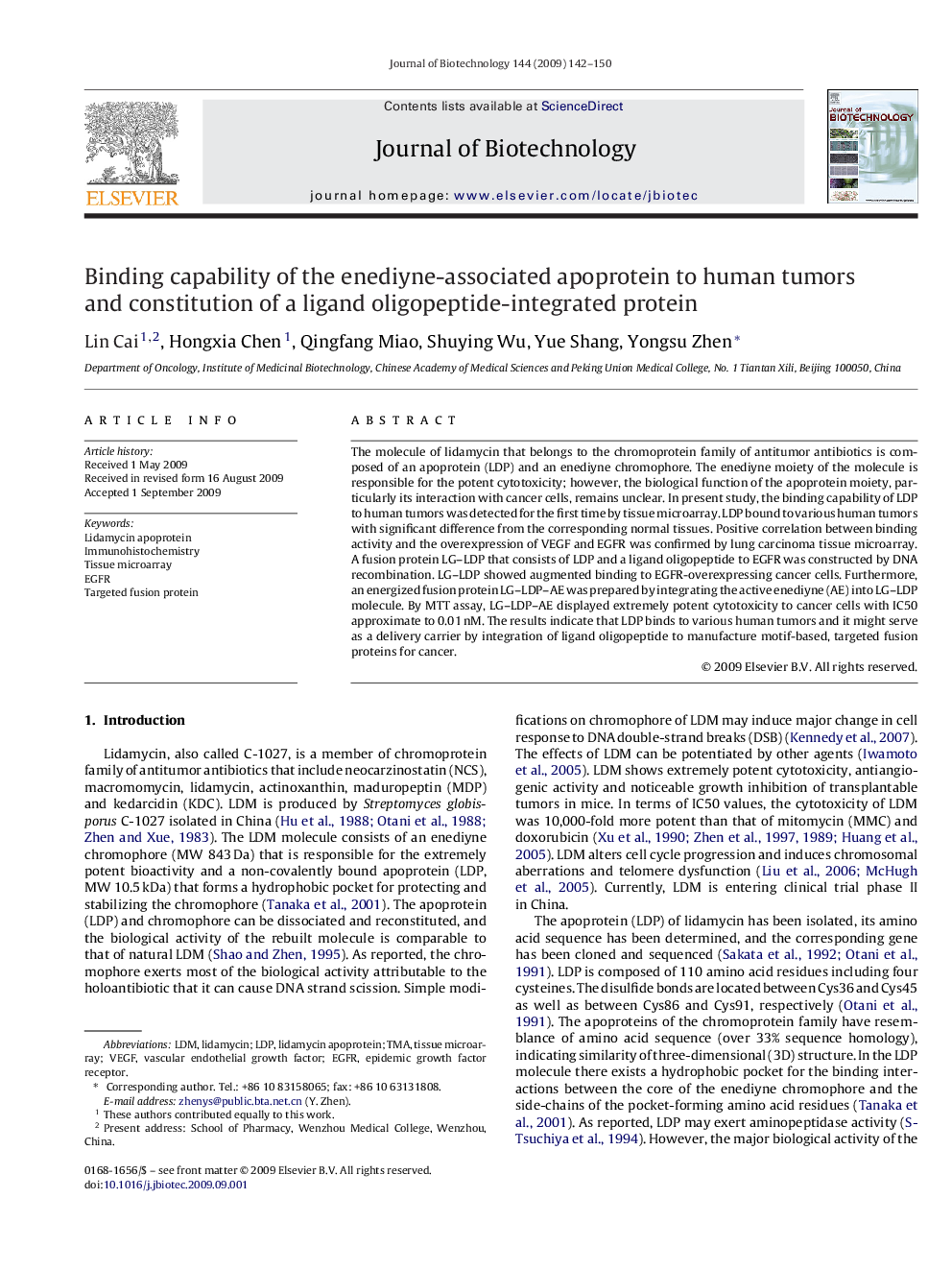| Article ID | Journal | Published Year | Pages | File Type |
|---|---|---|---|---|
| 24448 | Journal of Biotechnology | 2009 | 9 Pages |
The molecule of lidamycin that belongs to the chromoprotein family of antitumor antibiotics is composed of an apoprotein (LDP) and an enediyne chromophore. The enediyne moiety of the molecule is responsible for the potent cytotoxicity; however, the biological function of the apoprotein moiety, particularly its interaction with cancer cells, remains unclear. In present study, the binding capability of LDP to human tumors was detected for the first time by tissue microarray. LDP bound to various human tumors with significant difference from the corresponding normal tissues. Positive correlation between binding activity and the overexpression of VEGF and EGFR was confirmed by lung carcinoma tissue microarray. A fusion protein LG–LDP that consists of LDP and a ligand oligopeptide to EGFR was constructed by DNA recombination. LG–LDP showed augmented binding to EGFR-overexpressing cancer cells. Furthermore, an energized fusion protein LG–LDP–AE was prepared by integrating the active enediyne (AE) into LG–LDP molecule. By MTT assay, LG–LDP–AE displayed extremely potent cytotoxicity to cancer cells with IC50 approximate to 0.01 nM. The results indicate that LDP binds to various human tumors and it might serve as a delivery carrier by integration of ligand oligopeptide to manufacture motif-based, targeted fusion proteins for cancer.
